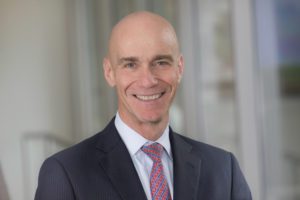SGO Wellness: Reflections On Leading: Groups versus Teams | Mark Robson, MD

Mark Robson, MD
I’ve been reflecting on what is needed from physician leaders right now. And we are all leaders, whether we have an official title or not. So, we all need to think about how we want to show up and shape the path forward post-pandemic. The last few years have been tremendously disruptive, but also instructive. Which learnings we bring forward will have a large influence on our future work environments. To frame this, it’s worthwhile to consider how physicians lead in two different organizational structures, teams and work groups.
Whether they realize it or not, doctors often work in teams, groups of individuals who come together to achieve a shared objective, a shared deliverable, in an interdependent manner. During the acute phase of the pandemic, many of us worked in cross-disciplinary teams that did not exist before the crisis. In fact, team structures were usually more flexible and efficient in solving the unique challenges of the pandemic than traditional hierarchies. Going forward, we will continue to work in teams, as we always have. Clinic teams take care of patients, research teams conduct investigations, and administrative teams execute specific projects. In these settings the physician is often the leader, coordinating the efforts of the team members. But the days of the authoritarian physician team leader are long gone. Teams in medicine today are much less hierarchical. The flattened structure that we have employed for the past two years cannot be reverted without causing a lot of resentment. Indeed, why would we want to move away from a highly successful paradigm?
We should grow our capabilities to lead in this more collaborative environment. To do this, we need an awareness of how our internal state is present externally and impacts other team members. How can we regulate our emotional presentation to effectively direct and motivate the team? This is emotional intelligence. One would think that we would be good at this because empathy is supposed to be a core physician attribute. But we are human and there is a range of innate abilities. We need to take an honest look inside and see how we can do better. And we need to figure out how to support our people in the development of these skills.
But most groups of physicians (services, divisions, etc.) are not teams, where a person’s success is determined by the performance of the group. One’s clinical performance does not usually rely on contributions from other physicians in the group. Investigators are not rated by the collective academic output of the whole group, despite efforts to recognize “team science.” Physician groups are not just collections of independent private practices or labs, either. Physician groups are organizational units working toward common organizational objectives such as clinical or research productivity. Technically, physicians in this structure constitute a “work group,” with work group leaders rather than team leaders. This has two leadership implications. First, the group leader must guide the group towards the fulfillment of the organizational function. At the same time, the group leader facilitates the individual success of the group members. This is not just defined by a person’s service to institutional priorities but by their progress towards their own goals and aspirations.
Sometimes the two leadership responsibilities are in tension. Finding the right balance is critical, and it is difficult. Leaders may slide toward the managerial side of the table, serving institutional priorities at the expense of the members of the group. This can evolve into a dynamic that may be a major contributor to burnout, since the group members may come to feel that they are mainly means to an organizational end. To mitigate this, group leaders should maintain the strong investment in individual group members that was made during the pandemic, when organizations overtly recognized the importance of physician wellness and self-realization.
Organizations will only thrive if the people within it are being their best selves. These are among the biggest leadership takeaways from the pandemic. All of us should be working on our emotional intelligence to improve our work within teams. And group leaders should constantly be thinking about how to help their group members realize their goals and ambitions. It’s only in environments like this that we will be able to make the contributions that we are capable of. With a nod towards Tom Peters, people first. Always people first.
Mark Robson, MD, is a medical oncologist at Memorial Sloan Kettering Cancer Center in New York, NY.
Further Reading:
Team Asana. Group vs. team: What’s the difference? October 14, 2021. https://asana.com/resources/group-vs-team
Peters T. Excellence now: Extreme humanism. Chicago, 2021.
Mark Robson’s On Service Substack: https://onservice.substack.com/